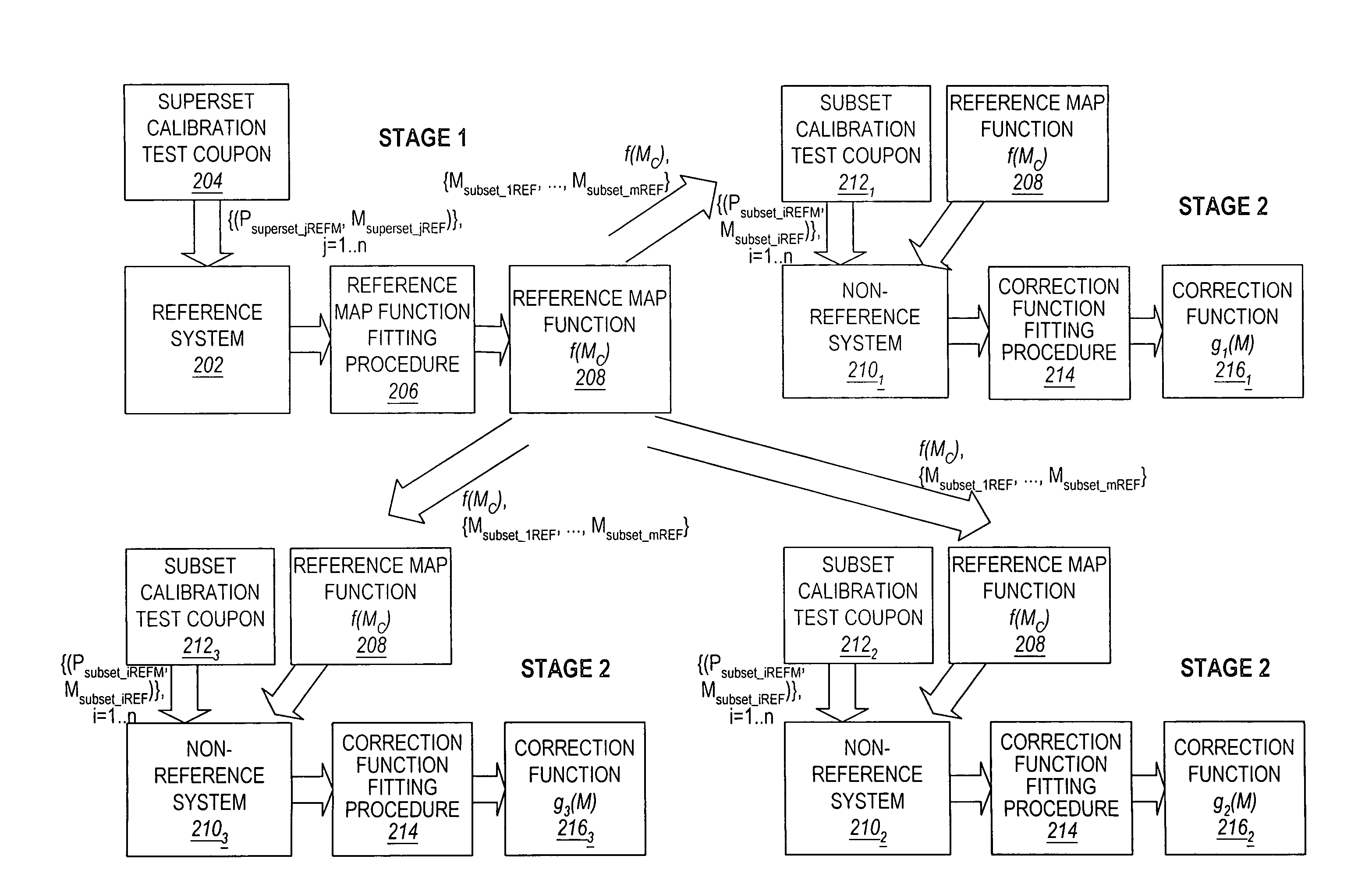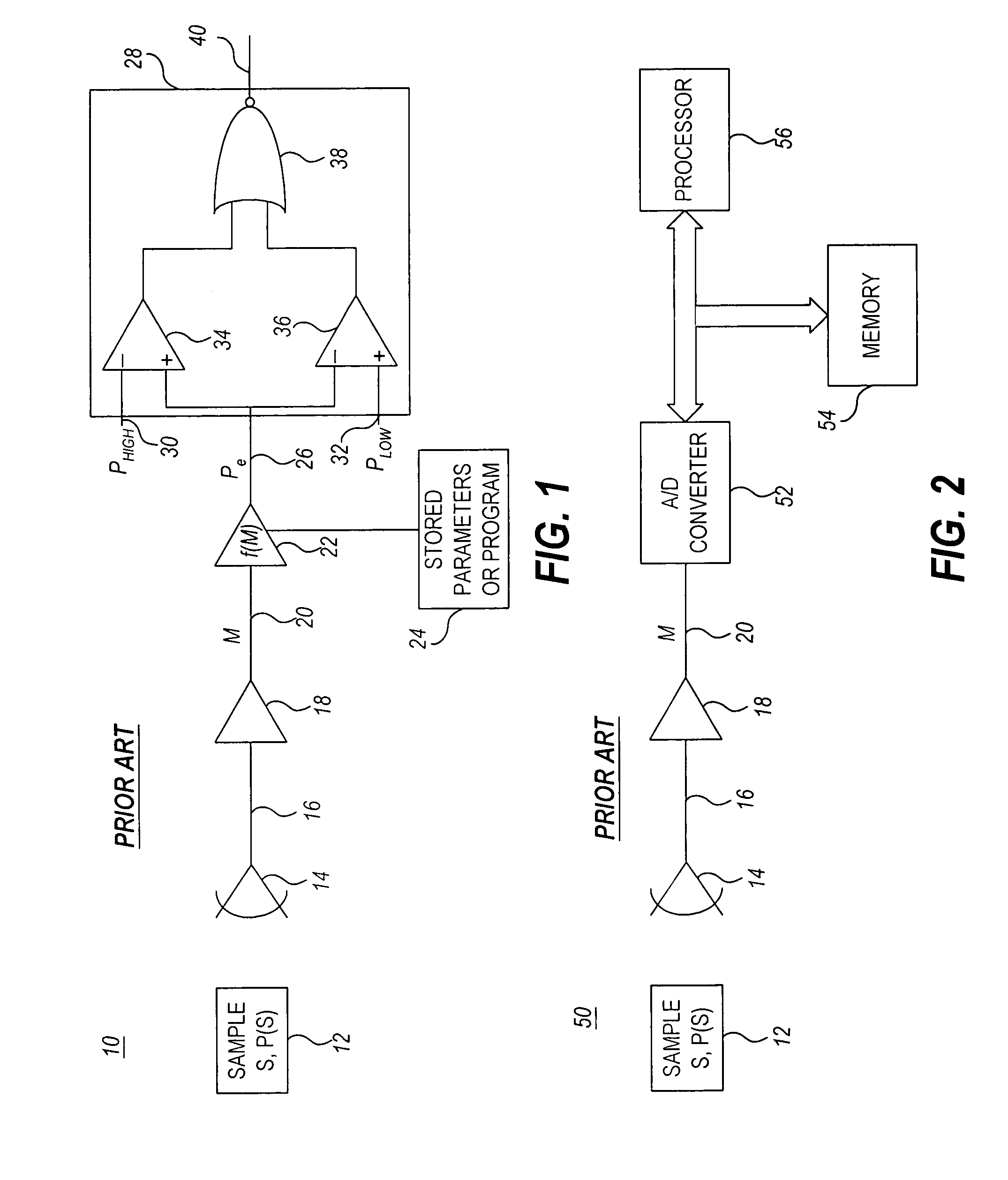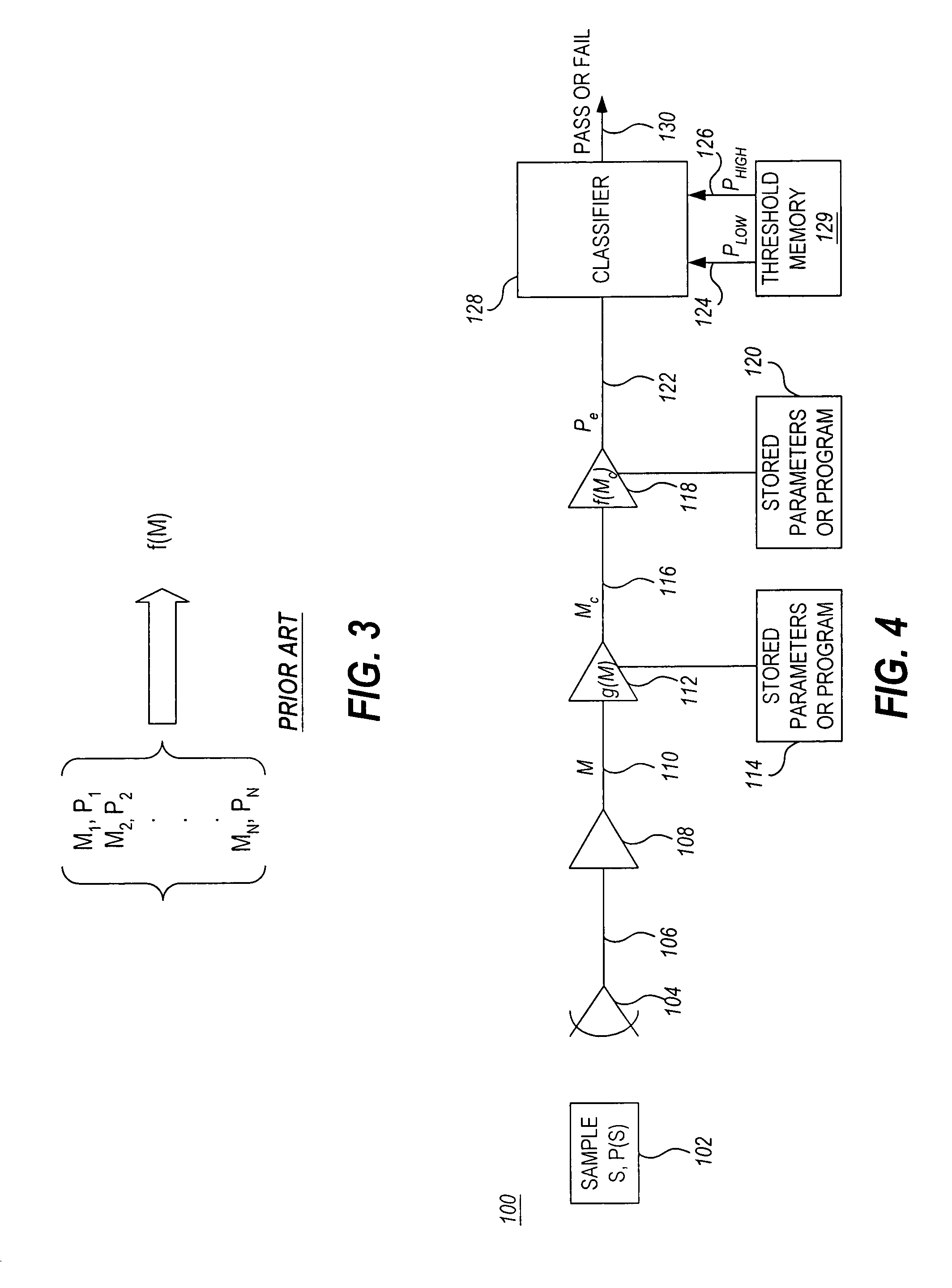Method and apparatus for calibration of indirect measurement systems
a technology of indirect measurement and calibration method, which is applied in the direction of calibration apparatus, instruments, heat measurement, etc., can solve the problems of complex relationship between the thickness of solder and the gray value observed in cross-sectional or transmission images, difficult to model accurately, and use of broadband (typically bremsstrahlung) x-ray sources in conjunction with monochromatic detectors, etc., to achieve a high degree of portability and accuracy, the effect of minimizing the differences between the local
- Summary
- Abstract
- Description
- Claims
- Application Information
AI Technical Summary
Benefits of technology
Problems solved by technology
Method used
Image
Examples
first embodiment
[0043]Turning now to the drawings, FIG. 1 is a simplified schematic block diagram of a prior art indirect measurement system 10. As illustrated, system 10 includes one or more sensors 14 which generate a sensed signal 16 that feeds a buffer / amplifier 18. The output 20 of the buffer / amplifier 18 is input to a map function 22. The map function 22 may be implemented as program instructions stored in memory 24 and executed by a processor (not shown). The map function 22 may be algorithmic, actively calculating an estimated parameter value, Pe, for each measurement value, M, or alternatively, estimated parameter values for given measurement values may be stored in memory, for example in a look-up table. The parameters and / or algorithms which need to be stored can reside in computer memory, in analog hardware (e.g. in settings of potentiometers or choice of component values), or in algorithmic form (e.g. executable code residing in firmware or software. The output 26 of the map function 2...
second embodiment
[0045]Similarly, the measurement 20, M, may be digitized and some or all subsequent operations performed digitally rather than in analog circuitry, as illustrated in the system 50 in FIG. 2, which shows a prior art indirect measurement system. Analog-to-digital (A / D) converter 52 converts the analog measurement 20, M, to a digital signal, which is processed by a digital map function under the control of a processor 56. In this embodiment, the map function, f(M), is stored in memory 54 along with any other algorithms and data required for system operation.
[0046]As described above, indirect measurement systems have conventionally been calibrated by measuring a large number, N, of calibration samples, {Si} at points, {Mi, Pi}, where i=1, . . . N, which are used to construct a new estimate of f(M), or to improve an existing estimate, as illustrated schematically in FIG. 3. Here Mi denotes the measurement obtained for the ith sample, Si, having known value, Pi, of the physical parameter ...
PUM
| Property | Measurement | Unit |
|---|---|---|
| thicknesses | aaaaa | aaaaa |
| thicknesses | aaaaa | aaaaa |
| thickness | aaaaa | aaaaa |
Abstract
Description
Claims
Application Information
 Login to View More
Login to View More - R&D
- Intellectual Property
- Life Sciences
- Materials
- Tech Scout
- Unparalleled Data Quality
- Higher Quality Content
- 60% Fewer Hallucinations
Browse by: Latest US Patents, China's latest patents, Technical Efficacy Thesaurus, Application Domain, Technology Topic, Popular Technical Reports.
© 2025 PatSnap. All rights reserved.Legal|Privacy policy|Modern Slavery Act Transparency Statement|Sitemap|About US| Contact US: help@patsnap.com



